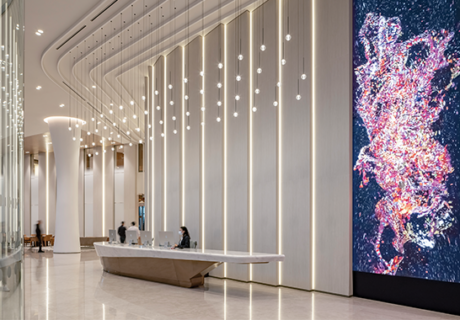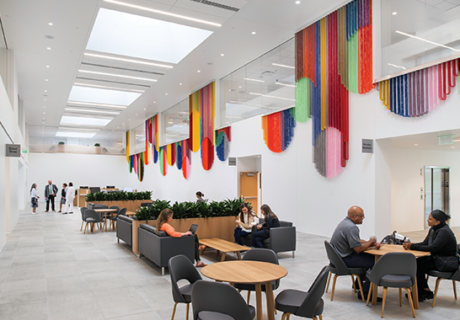Bird-friendly Building Design
Heavy snowfall wasn’t the only natural phenomenon that had a major impact on the design of the UP Health System–Marquette hospital. Another was the huge flocks of migratory birds traversing the skies overhead, both as they head south for the winter and back home in the spring.
During a planning commission public hearing on the project, Greg Gore, project executive/senior architect at Gresham Smith, says his team first became aware of concerns that birds such as warblers, sparrows, robins, and geese might hit the building (commonly referred to as a “strike”). “Someone in the audience asked, ‘What are you going to do about reducing the bird strikes a big building like this would likely experience?’” he recalls. “We said we’d check into that.”
In talking with state wildlife officials and Michigan’s Audubon Society, the designers realized that the project’s eight-story patient tower would indeed be a likely target for migratory birds—especially if its exterior was a typical glass tower.
“With highly reflective, repetitive building envelopes, birds have difficulty ascertaining there is a building there and not a reflection of the sky, which leads to strikes,” Gore says. “Moreover, with hospitals, we try to provide some reflectivity to the patient room glazing to provide privacy.”
A solution to balancing the patient experience with protecting the birds was found by using multiple colors and multiple grades of reflectivity on the exterior so the birds could identify and avoid the building, Gore says. “And doing so had the added bonus of giving it a unique appearance that adds to the hospital’s visual prominence in the town.”
For more on the UP Health System—Marquette project, read “UP Health System–Marquette” or check out Healthcare Design’s May issue.





